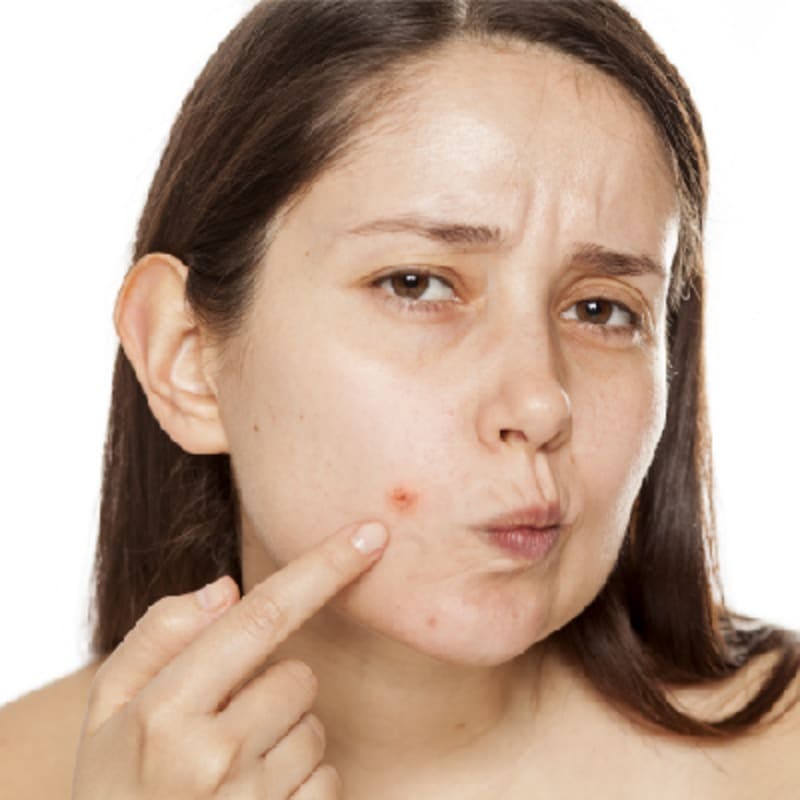Despite being so common, acne is a very varied condition. The six main types of spots caused by acne are whiteheads, blackheads, papules, pustules, cysts and nodules.
Written by Medical Professional
Can be Treated Online
Appointments Available Today
Written by
Dr Farah Gilani
Doctor
Reviewed by
Dr Faiza Khalid
Doctor
Last Updated:
Next Review: Sep 1, 2025
Guide contents
01The six types of acne spots
Articles related to Acne Types
The six types of acne spots
Despite being so common, acne is a very varied condition. The six main types of spots caused by acne are whiteheads, blackheads, papules, pustules, cysts and nodules.
As these types vary in severity, knowing which spots you suffer from is important to identify the correct treatment. Receiving prompt, correct treatment reduces the risk of long-term skin complications such as scarring or dark spots. If you are unsure about what type of acne spots you have, we can help with:
What type of acne do I have? And what are blackheads?
This chapter covers
- What are whiteheads?
- What are blackheads?
- What are papules?
- What are pustules?
- What is a nodule?
- What is a cyst?
What are whiteheads?
One of the most frequent types of acne is whiteheads: small, round, white bumps on the skin’s surface. Whiteheads are caused by the pores in your skin becoming clogged with dead skin, bacteria and oil. If these clogged pores are ‘closed’ (covered with a layer of thin skin), they appear white on the surface.
Often seeming to develop at the worst time, whiteheads can be annoying. However, they are little to worry about. Whiteheads can be easily treated through over-the-counter medical treatments and small lifestyle changes.
What are blackheads?
The other type of mild acne is blackheads. Blackheads are similar to whiteheads except for one key difference. As the top of the clogged pores are open, the surface of these spots appear dark or black instead of white. Contrary to popular belief, this black colour is not from dirt but because bacteria or dead skin cells are reacting with oxygen.
What are papules?
If you have red bumps on the surface of your skin, you might have acne papules. Acne papules are inflamed blemishes that form when there is a high break in the follicle wall. They often feel hard, tender and sore. Also known as pimples or zits, papules often turn into pustules
If you’re concerned about papules, an over-the-counter treatment such as calamine lotion or benzoyl peroxide gel might soothe the inflammation.
What are pustules?
Pustules look similar to papules but are often larger. You can identify this type of acne from the white tips at the centre, caused by a build-up of fluid or pus. Pustules can develop on any part of the body, but this form of acne most commonly affects the back, chest and face.
What is a nodule?
If your acne is severe, it is likely to include nodules. Nodular acne is made up of large, inflamed and painful bumps. When blocked pores become more irritated they grow even bigger and affect deeper layers of the skin. If you have nodular acne you should visit your GP to receive the right treatment.
What is a cyst?
Cystic acne is the most severe type of spot caused by acne. Cystic acne is caused by bacteria trapped inside of your pores reaching too deep into your skin. Compared to nodules, cysts are often softer and contain pus, looking similar to boils. You should avoid any temptation to pop cysts as this carries a large risk of causing permanent scarring. Instead, see your GP to receive the correct treatment.
So, how does it work?
Book in seconds
Select a day and time that suits you — then see a doctor on your phone or at a pharmacy.
Speak to a doctor
Have a video consultation and be examined by one of our expert doctors.
Get back to feeling better
Whether it’s a diagnosis, personalised treatment plan or prescription — our doctors can help.
